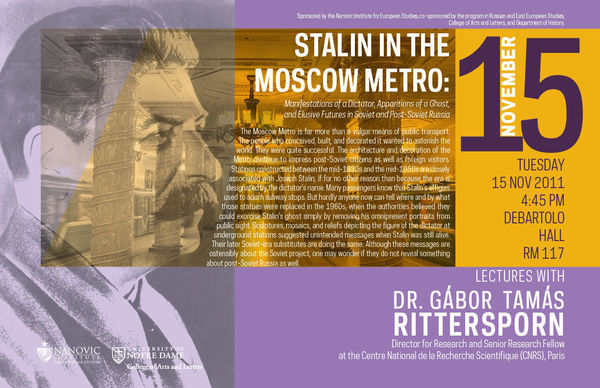
November 14-15
Lectures with Dr. Gábor Tamás Rittersporn
Director for Research and Senior Research Fellow at the Centre National de la Recherche Scientifique (CNRS), Paris
Stalin in the Moscow Metro:Manifestations of a Dictator, Apparitions of a Ghost, and Elusive Futures in Soviet and Post-Soviet Russia
The Moscow Metro is far more than a vulgar means of public transport. The people who conceived, built, and decorated it wanted to astonish the world. They were quite successful. The architecture and decoration of the Metro continue to impress post-Soviet citizens as well as foreign visitors. Stations constructed between the mid-1930s and the mid-1950s are closely associated with Joseph Stalin, if for no other reason than because the era is designated by the dictator’s name. Many passengers know that Stalin’s effigies used to adorn subway stops. But hardly anyone now can tell where and by what those statues were replaced in the 1960s, when the authorities believed they could exorcise Stalin’s ghost simply by removing his omnipresent portraits from public sight. Sculptures, mosaics, and reliefs depicting the figure of the dictator at underground stations suggested unintended messages when Stalin was still alive. Their later Soviet-era substitutes are doing the same. Although these messages are ostensibly about the Soviet project, one may wonder if they do not reveal something about post-Soviet Russia as well.
Sponsored by the Nanovic Institute for European Studies; co-sponsored by the program in Russian and East European Studies, College of Arts and Letters, and Department of History.